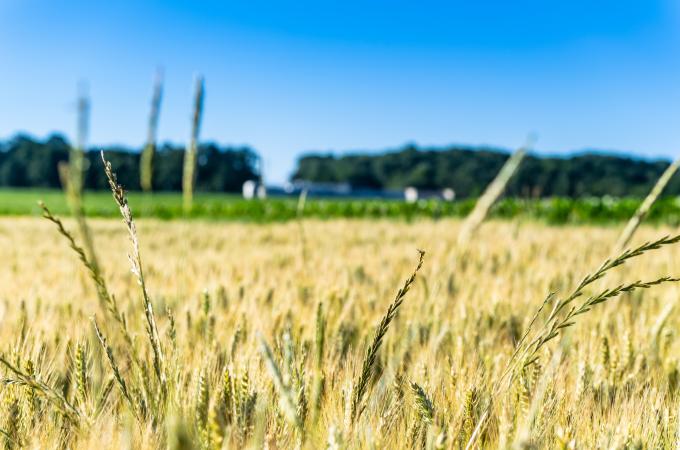Our hydrogen projects
Some examples of projects.

HyPSTER
In the region of Auvergne Rhône Alpes, Storengy and its partners (Axelera, Armines-Ecole polytechnique, Element Energy, ESK, Ineris, Inovyn, Equinor, Brouard Consulting) develop the first demonstrator of large-scale green hydrogen storage.
This project is going to use a salt cavern of the Storengy storage site in Etrez to connect electrolysis production to industrial and mobility applications.
The salt cavern used has a storage capacity of 44 tons of hydrogen, which is the equivalent of 1760 hydrogen bus tanks.
HyPSTER is located in a particularly dynamic territory regarding the development of green hydrogen usages with large-scale projects such as Zero Emission Valley (Project ZEV) in the region of Auvergne-Rhône-Alpes, the construction of hydrogen production units and filling stations in the region of Bourgogne Franche Comté. Its geographical location is also an asset for industries which are present in the Chemical Valley.
The ZEV (Zero Emission Valley) project in the region of Auvergne Rhône Alpes comprises 20 hydrogen stations and 1000 hydrogen vehicles by 2023. Industrial grey hydrogen applications are already existing (especially in the Chemical Valley) and decarbonising the industry and heavy mobility of this sector with green hydrogen is being taken into consideration.
This project has received funding from the Fuel Cells and Hydrogen 2 Joint Undertaking (now Clean Hydrogen Partnership) under Grant Agreement No 101006751. This Joint Undertaking receives support from the European Union’s Horizon 2020 Research and Innovation programme, Hydrogen Europe and Hydrogen Europe Research.
Hydrogen storage project at Manosque
The Géométhane storage site at Manosque, operated by Storengy, has 9 salt caverns, including 7 natural gas caverns. The total geometric volume of caverns in service is 2.7 Mm3, compared with the 6 Mm3 authorised by the concession. In addition to the 7 caverns in operation, there are two caverns available that are technically and administratively suitable for storing hydrogen.
The issues of security of supply for industry and compatibility with European directives on the development of renewable energies (RED II, and soon RED III) highlight the urgent need for massive storage (several thousand tonnes) for the Fos-Marseille carbon-free hydrogen consumption basin.
The Manosque salt caverns represent a strategic asset in this respect since they will enable around 6,000 tonnes of hydrogen to be stored. It is also possible to continue leaching existing caverns to increase capacity and create new caverns to meet changing needs.
Storage in salt caverns offers great flexibility and can respond very quickly to any demand. The quantity of gas contained in the pipeline between Manosque and the Marseille - Fos-sur-Mer Basin provides additional flexibility. Switching from injection to withdrawal mode or vice versa can be done in a short space of time, and injection and withdrawal flow rates can be very high.
Salt caverns provide security of supply, make it possible to adjust hydrogen production and consumption curves, manage the intermittent nature of renewable energies and provide tools for flexibility and optimisation of electricity grids.
SaltHy
SaltHy (Storage Alignment with Load and Transport of Hydrogen) is a lighthouse project in northern Germany on an industrial scale, in which green hydrogen regionally produced from wind turbines and photovoltaic systems is set to be stored in underground salt caverns at the Harsefeld gas storage facility. For this purpose, one or two new caverns will be added to the storage facility. From 2030 onwards, approximately 30 to 100 million standard cubic metres of pure hydrogen will be stored in these caverns. A feasibility study is currently being prepared for this project.
The goal is to make this green hydrogen available to local customers from industry and the mobility sectors.
Gasunie’s supra-regional pipeline network ("HyPerLink") and the "Hamburg Green Hydrogen Hub"’s distribution network can use this storage facility to compensate for the effects of fluctuations in production and consumption in their networks. This will promote the development of a green hydrogen economy in northern Germany and the creation of a European “H2 backbone”.
MéthyCentre
The first innovative Power-to-Gas demonstrator coupled with agricultural methanisation.
The process combines the use of a 250 KW electrolyser and an agricultural methanisation unit.
MéthyCentre's objective is to demonstrate the technological and economic feasibility of the process, which makes it possible to obtain three decarbonized gases:
- renewable hydrogen
- biomethane
- synthetic methane
In 2023, MéthyCentre will produce 50 m³/h of green gas and 50 kg of hydrogen per day.
90% of the hydrogen produced will be used to produce synthetic methane for injection into the GRDF distribution network for traditional residential and industrial uses. The remaining 10% of the hydrogen will be used for green mobility and to power the mobility terminal installed on the site.
During 2 years, the pilot will follow an experimentation program in order to test the intermittent operation and to measure the performance of the technological bricks.
This project is supported by the France 2030 Investment Programme operated by ADEME, the Centre-Val de Loire Region via its ERDF funds and co-constructed with our partners: CEA, Elogen, Khimod, Prodeval, La Sablière and the Syndicat intercommunal d'énergie d'Indre-et-Loire (SIEIL).
